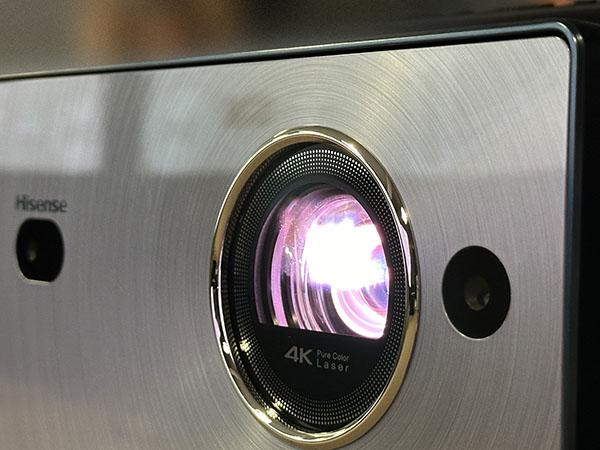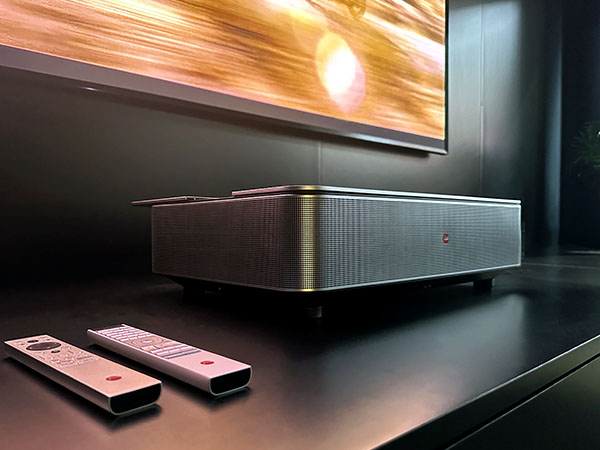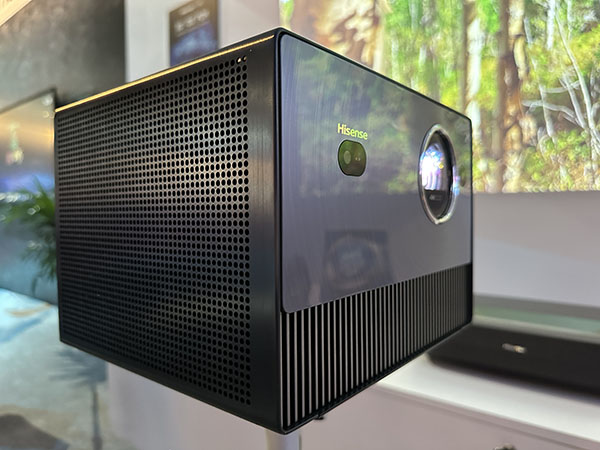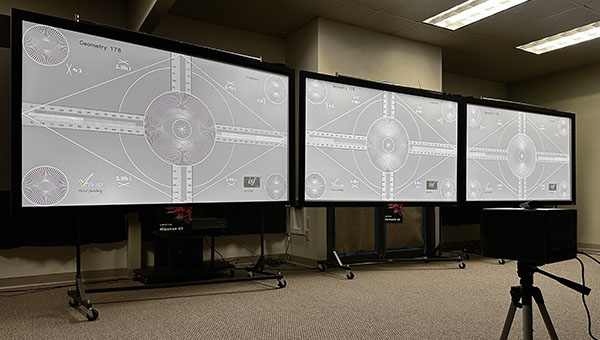4K is superior in terms of quality, drift hunters, details, sharpness and all other aspects you look for in creating your home cinema experience.
4K Projector Buyer’s Guide

Meanwhile, the dedicated home theater projectors from industry stalwarts like Epson, JVC, and Sony have transitioned to laser light sources.
A key point to emphasize is that this buyer’s guide is based directly on my hands-on experience with all the included models. It is not a list that’s just based on specs. Also for the purpose of this roundup we're staying away from five-figure price tags (or higher). Otherwise, we'd simply suggest you go buy a Christie Eclipse and be done with it!
Dedicated Home Theaters versus Living Areas
A 4K dedicated home theater projector typically starts at around $5,000 and can run into the six figures for high-end installations. These projectors are generally much larger than the lifestyle models and do not usually offer more brightness than the other projectors featured in this list. Instead, they focus on delivering superior contrast, a feature best leveraged in a completely light-controlled environment such as a dedicated home theater with dark walls and ceiling. Home theater projectors often include sophisticated optics with powered focus, zoom, and lens shift capabilities.
The rest of this list comprises projectors suitable for more versatile environments, such as living rooms, basement hangouts, or backyard cinemas. However, even home theater enthusiasts will find appealing qualities in some of the Ultra-Short-Throw (UST) projectors and laser/LED lifestyle projectors. These models stand out for their high brightness relative to their size and cost.
Something to keep in mind when shopping for any projector is the combination of viewing environment and content type. The darker the theater the more black levels come into play when it comes to creating contrast. But in a living room with a lot of ambient light, it is brightness that plays the key role in perceived image quality.
It is practically axiomatic that a movie lover will appreciate a projector that does well in a dark space. But the flip side is that a sports lover will appreciate a projector that produces an image that holds up on a Sunday afternoon in a white-walled living room with only curtains or shades blocking the Sun.

A dedicated home theater featuring dark walls and a black ceiling.

A projector in a bright living room with white walls.
Native 4K vs. Pixel-Shift
Of all the projectors on this list, only the dedicated home theater models are native 4K. The others employ pixel-shift technology to display more pixels on the screen than the imager actually possesses. This is achieved by rapidly shifting the position of the imaging chip, either between two points (2X) or four points (4X) pixel-shifting. Technically, 4X pixel-shifting can project an image with 4K resolution although the pixels themselves do overlap, so it is not possible to reproduce a 1-pixel checkerboard pattern. Nevertheless pixel-shift has proven effective at increasing resolution while simultaneously mitigating the "screen door effect" seen with native 1080p imagers.
Interestingly, the impact of a lens is such that a DLP projector with 4X pixel-shifting and a really sharp lens can resolve detail as well as, or perhaps even better than, a native 4K home theater projector. This means that for a dedicated home theater projector to fully render 4K detail, it needs a high-grade lens, which often comes with a significant cost if it is to feature zoom and shift capabilities.
LED and Laser Longevity
The common thread among these projectors is their use of solid-state light sources, eliminating the need for traditional bulbs. The difference in lifespan is dramatic, going from thousands of hours to tens of thousands. However, the type of light source used varies. Laser-phosphor models, which utilize a single color blue laser, often have a more limited color gamut compared to RGB triple-laser units. However, they are largely immune to creating visible laser speckle, a phenomenon seen in triple-lasers that can affect image clarity.
Other projectors used LEDs as a light source. LEDs offer high brightness and longevity but typically not as wide a color gamut as laser. Some projectors combine lasers and LEDs, a strategy that can offer a favorable balance between cost, color depth, brightness, and the reduction of laser speckle artifacts.

Exploded view of the XGIMI Horizon Ultra's hybrid laser/LED light engine.
Artifacts?
Yes. Artifacts are an unfortunate reality in projector technology – there's always a trade-off. For example, triple-laser RGB projectors often exhibit laser speckles. These speckles resemble glowing grains or noise on the screen.
In the case of triple-laser Ultra-Short-Throw (UST) projectors, a common issue is convergence problems, leading to what appears to be chromatic aberration (CA). This manifests as a colored fringe – typically red and blue – surrounding a black line against a white background. However, these effects usually become less noticeable at the distances typical for normal viewing.
Another artifact specific to DLP (Digital Light Processing) projectors is the 'rainbow effect.' Although less prevalent than in older models, which used bulbs and color wheels, it can still be detected with careful observation. Unlike before, when the effect was continuously noticeable, it now requires active effort to spot it."
The thing to know is that different people have different tolerance thresholds for different artifacts. That's why projectors need to be judged based on the actual intended usage of the buyer. For example, when it comes to laser speckle I find it's usually hard to spot with normal content at normal viewing distances and therefore its presence is a worthwhile trade-off for the rich saturated colors that you get with triple-laser RGB light sources. But as the saying goes, your mileage may vary.
Special Screens
Investing in a dedicated screen significantly enhances the projection experience. While a plain wall can suffice for temporary, portable setups, a quality screen maximizes a projector's performance.
UST projectors, in particular, often pair well with specialized lenticular ambient light-rejecting screens with strong ceiling light rejection. These screens are designed to improve contrast and effectively reduce the impact of light reflecting off the ceiling. This makes them suitable even in rooms with some ambient lighting. However, in a dark room dedicated to movie watching, a UST can also perform well with a standard white screen, especially when the ceiling is black to prevent reflections that can wash out the image.

UST projectors like this Leica Cine 1 need specific types of screens to look their best.
A notable advantage of UST projectors is their proximity to the screen, which prevents people from walking in front and obstructing the view. The dedicated screens for USTs excel in rejecting side and ceiling light, enhancing image quality. But keep in mind, these screens can be pricey, and pairing a UST with a high-quality screen may cost as much as a 100-inch TV. And they only work properly with UST projectors, they will literally reject light coming from a long-throw projector.
The guide also features a new generation of compact, long-throw projectors. These projectors, boasting light engines similar to those in USTs, come in varieties like single-laser plus phosphor, triple-laser RGB, and hybrid-laser LED. They all deliver high light output, great longevity, and a wide color gamut which leverages that aspect of HDR.
What's interesting about these new compact long-throw projectors is their lenses: they are simple yet incredibly sharp. 'Simple' because they lack shift capabilities and have minimal or no optical zoom. That means placement options are limited unless you are willing to use digital zoom and keystone (fine for temporary installs, but for permanent placement it's best to disable such adjustments and work with physical placement.
The main point is with these simple lenses are a bit like photographic prime lenses. Smaller and yet higher-quality than a zoom. Their sharpness ensures they don't compromise on image quality, comparing favorably with both USTs and larger home theater models. Impressively, these projectors can deliver excellent image quality even on a painted wall.

The Hisense C1 is an example of the new breed of lifestyle projectors that are both bright and sharp.
With prices typically under $2,000, these compact lifestyle 4K models rival premium 85" TVs in cost-efficiency, offering stunning visuals, particularly in darkened environments.

- Log in or register to post comments


For a home cinema projector in dark location that can still display a clear image despite some ambient light, dino game, you'll need a projector above 2000 lumens.

Wordpress plugins is looking forward to exploring these options!
























































